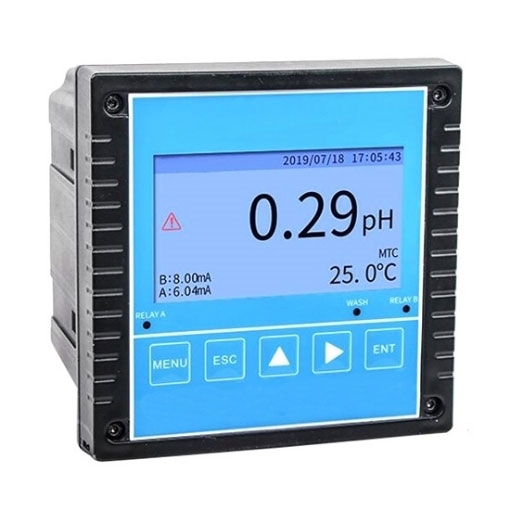A pH meter is an instrument used to test the acidity or alkalinity of a solution by measuring the active concentration of hydrogen ions (H+) in an aqueous solution to determine its acidity or alkalinity.
A pH meter is a precision electrochemical instrument used to measure the concentration of hydrogen ions in dissolved liquids. It utilizes the physics of the response of an electrode to H+ ions at different temperatures and pressures. The value measured by a pH meter is called the "pH value", which usually ranges from 0 to 14, with smaller values indicating a more acidic pH, and larger values indicating a more alkaline pH.
Classification of PH Meters
According to the needs of production and life, people have scientifically researched and produced many models of pH meters.
- According to the measurement accuracy can be divided into 0.2 grade, 0.1 grade, 0.01 grade, or higher accuracy. The selection of the accuracy level of the pH meter is based on the user's decision to measure the required accuracy.
- The volume of the instrument is divided into pen type (mini type), portable, desktop, and online continuous monitoring and measurement of online type.
- According to the requirements of the use of pen-type (mini-type) and portable PH, a pH meter is generally brought to the site by the inspector to test the use.
Principle of PH Meters
The working principle of a pH meter is based on two factors. The change in color of the acid-base indicator and the change in potential generated by the decomposition of the electrolyte. PH meters calculate the active concentration of hydrogen ions in a solution by measuring the difference in potential between two reference electrodes and converting it to pH value.
The core component of a pH meter is a glass electrode, which is called the "reference electrode" or "auxiliary electrode", and another electrode containing an acid-base indicator, which is called the "working electrode". The other electrode containing the acid-base indicator is called the "working electrode".
When this electrode comes into contact with a solution, a reaction occurs that causes the surface of the "working electrode" to change color. When the potential difference recorded by the "reference electrode" is stabilized, the voltage value can be used to deduce the pH value of the solution.
Application of PH Meters
The pH meter has a wide range of applications in the fields of chemistry, pharmacy, water treatment, and food production. It can be used to test the water quality, determine the acidity and alkalinity in beverages, and determine the antimicrobial capacity of food.
And many reactions are only effective in a specific pH value, so a pH meter is also for many laboratories of the basic testing equipment. In addition, in the field of agricultural production, a pH meter is also commonly used to adjust the acidity and alkalinity of the soil to enhance the growth and yield of crops.
PH meters are widely used in different fields, in different environments, and in different places, there are different ways to measure pH values needed, so it is important to choose to measure pH values in an appropriate way. sisco.com offers a wide range of pH meters to choose from, ideal for testing the pH, ORP, and temperature values of water or food.

